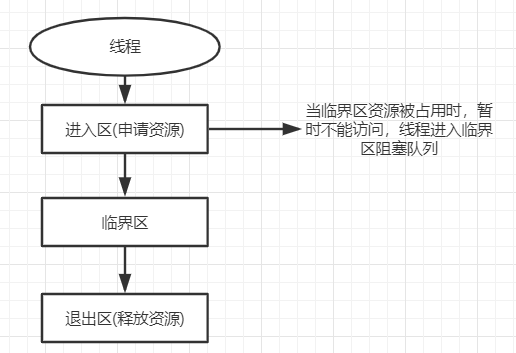Java并发编程:线程的生命周期
前言:
上一篇中我们了解到进程和线程的区别,以及使用多线程的优缺点,本篇主要讲在Java中是如何去创建一个线程,以及线程的生命周期。
面试问题
Q :线程的实现方式?
Q :start()和run()的区别?
Q :线程的生命周期和状态?
线程的生命周期
1.1如何创建一个线程
1.1.1实现Runnable接口
实现Runnable接口,重写run方法。
Runnable的意思是“任务”,是通过实现Runnable接口,定义一个子任务,交由一个Thread对象执行,必须将Runnable的实现作为Thread类的参数,然后通过调用Thread的start方法来创建一个新线程来执行该任务。如果直接调用run方法,则会被当作当前线程的一个普通方法调用,不会创建一个新线程。
public class MyThread implements Runnable {
public void run() {
System.out.println("MyThread");
}
public static void main(String[] args){
new MyThread().start();
}
}
1.1.2继承Thread类
继承Thread类,重写run方法,run方法中定义这个线程要执行的任务。
Thread是java中的线程类,通过new Thread()可以创建一个线程对象,JVM会根据这个线程对象来创建一个操作系统层面的线程,而这个线程要做的事也就是run方法中的内容.Thread类实现了Runnable接口,我们通过继承Thread类创建线程,这种方式相当于对实现Runnable接口的方式做了一个简化,不需要通过单独创建Thread对象来执行任务,因为自身就是一个Thread对象,重写的run方法中定义了要执行的任务内容,可以直接调用自身的start方法,开启一个新线程执行该任务。不足在于java是单继承的,如果还需要继承其他类,则只能选择Runnable接口。
public class MyThread extends Thread {
public void run() {
System.out.println("MyThread");
}
public static void main(String[] args){
new MyThread().start();
}
}
1.1.3实现Callable接口
实现Callable接口,重写call方法,在泛型中定义返回值类型。
Runnable的执行是没有返回值的,Callable可以返回执行结果。通过FutureTask类来封装一个有返回值的任务,将任务交由Thread类执行,最后通过FutureTask拿到执行结果。FutureTask实现了RunnableFuture接口,RunnableFuture分别实现了Runnable和Future接口。Runnable接口提供了run方法,使其可以交由线程来执行,Future接口提供get方法,使其可以拿到返回值。
public class MyThread implements Callable<String> {
public String call() throws Exception {
return "Callable";
}
public static void main(String[] args){
FutureTask<String> task = new FutureTask<>(new MyThread()));
new Thread(task).start();
System.out.println(task.get());
}
}
Future模式
我们了解了FutureTask接口的继承结构,知道它有什么功能,但具体是如何实现的呢。
下面简单的模拟一下Callable的实现原理,只模拟Future接口get方法的实现,用FutureData
来模拟FutureTask类。
public interface MyFuture{
String get();
}
public class FutureData implements Runnable, MyFuture {
Callable<String> callable;
private String result;
public FutureData(Callable callable) {
this.callable = callable;
}
public String get() {
return result;
}
public void run() {
try {
result = callable.call();
} catch (Exception e) {
result = null;
}
}
}
public class MyThread implements Callable<String> {
public String call() {
return Thread.currentThread().getName() + " call()";
}
public static void main(String[] args) throws ExecutionException, InterruptedException {
FutureTask<String> task = new FutureTask<>(new MyThread());
new Thread(task).start();
TimeUnit.MILLISECONDS.sleep(100);
System.out.println(task.get());
FutureData data = new FutureData(new MyThread());
new Thread(data).start();
TimeUnit.MILLISECONDS.sleep(100);
System.out.println(data.get());
}
}
//Ouput
// Thread-0 call()
// Thread-1 call()
通过上面的例子可以看出,FutureData内部有两个字段,Callable用来接收你定义的任务;result用来存放任务的返回值。start()后会单独开辟一个线程执行任务,在这个过程中并不影响主线程的工作,上一篇中提到了多线程的优势之一的异步化事件处理,程序响应更快。在这种模式就有所体现。在任务执行完成后,把返回值存放在reslut中,等待被其他线程取出,如果其他线程在任务还没执行的时候就调用get方法去拿result中的值,只能拿到null,这样就有个一问题,到底是任务执行结果为null还是任务没开始执行。在FutureTask中是通过设置一个标志位来判断任务当前的状态,如果任务还没执行或者没执行完成,那么get()方法将会被阻塞,直至任务执行完成。
1.1.4对创建线程的一些个人理解
个人觉得创建线程只有new Thread()这种方式,定义任务有Runnable接口和Callable接口两种方式,继承Thread类间接实现Runnable接口和直接实现Runnable接口,都是为了重写run方法,这个方法中定义的是线程需要执行的内容,更像是一个任务,如果将接口名改为Task接口也许更好些,run方法没有返回值,我们可以通过实现Callable的call方法来定义一个有返回值的任务。
1.2线程的生命周期和状态
Java中线程的状态和操作系统中的状态有所出入。以下为Java中线程的各个状态,是虚拟机层面上暴露给我们的状态,这些状态是由枚举类Thread.State中明确定义的,

- 初始状态:当线程被创建且还没有调用start()方法时,它会处于这种状态。此时它已经分配了必需的系统资源,并执行了初始化。线程当前还没有资格获取CPU的时间片。
Thread thread = new Thread("MyThread");
System.out.println(thread.getName()+"当前状态:"+thread.getState());
//Output
// MyThread当前状态:NEW
- 运行状态:在初始状态下调用start()方法会进入当前状态,线程已经有资格获得CPU时间片了,在这种状态下,只要调度器把时间片分配给线程,线程就可以运行,处于运行中状态;如果没有拿到,只能等待获取时间片,此时线程处于就绪状态,统称为运行状态。
Thread thread = new Thread("MyThread");
thread.start();
System.out.println(thread.getName()+"当前状态:"+thread.getState());
//Output
// MyThread当前状态:RUNNABLE
- 阻塞状态:线程本来能够运行,但由于等待获取某个锁而阻止它的运行。当线程处于阻塞状态时,调度器将忽略线程,不会分配给线程任何CPU时间。直到线程重新进入了就绪状态,它才有可能执行操作。
Object lock = new Object();
Thread thread = new Thread("MyThread") {
public void run() {
synchronized (lock) {
while (true) {}
}
}
};
Thread thread2 = new Thread("MyThread2") {
public void run() {
synchronized (lock) {
while (true) {}
}
}
};
thread.start();
thread2.start();
Thread.sleep(100);
System.out.println(thread.getName() + "当前状态:" + thread.getState());
System.out.println(thread2.getName() + "当前状态:" + thread2.getState());
//Output
// MyThread当前状态:RUNNABLE
// MyThread2当前状态:BLOCKED
- 等待状态:线程进入等待状态后不会被分到时间片,无法继续执行,而且必须要其他线程进行操作才能被唤醒。
Thread thread = new Thread("MyThread") {
public void run() {
synchronized (this) {
try {
wait();
} catch (InterruptedException e) {
e.printStackTrace();
}
}
}
};
thread.start();
Thread.sleep(100);
System.out.println(thread.getName() + "当前状态:" + thread.getState());
//Output
// MyThread当前状态:WAITING
- 超时等待状态:和等待状态类似,区别在于这个状态会待一段时间,时间到了线程可以将自己唤醒。
Thread thread = new Thread("MyThread") {
public void run() {
synchronized (this) {
try {
wait(1000);
} catch (InterruptedException e) {
e.printStackTrace();
}
}
}
};
thread.start();
Thread.sleep(100);
System.out.println(thread.getName() + "当前状态:" + thread.getState());
//Output
// MyThread当前状态:TIMED_WAITING
- 终止状态:终止状态的线程将不再是可调度的,再也不会得到CPU时间,它的任务已结束。任务终止通常是run()方法执行完成,或者程序抛出异常。
Thread thread = new Thread("MyThread") {
public void run() {
System.out.println((Thread.currentThread().getName() + " 执行完毕"));
}
};
Thread thread2 = new Thread("MyThread2") {
public void run() {
throw new RuntimeException("程序执行出错了");
}
};
thread.start();
thread2.start();
thread.join();
thread2.join();
System.out.println(thread.getName() + "当前状态:" + thread.getState());
System.out.println(thread2.getName() + "当前状态:" + thread2.getState());
//Output
// MyThread 执行完毕
// Exception in thread "MyThread2" java.lang.RuntimeException: 程序执行出错了
// at tmp.NewThreadTest$4.run(NewThreadTest.java:47)
// MyThread当前状态:TERMINATED
// MyThread2当前状态:TERMINATED
临界区
临界区用来表示一种公共资源或者说是共享数据,可以被多个线程使用,但是每次只能一个线程使用它,一旦临界区资源被占用,其他线程想要使用这个资源,就必须等待。

阻塞(Blocking)和非阻塞(Non-Blocking)
https://blog.csdn.net/history...
阻塞非阻塞是关于线程与进程的。
阻塞是指调用线程或者进程被操作系统挂起。非阻塞是指调用线程或者进程不会被操作系统挂起。
阻塞和非阻塞通常用来形容多线程间的相互影响,比如一个线程占用了临界区资源,那么其他所有需要这个资源的线程就必须在这个临界区外进行等待,等待会导致线程挂起。这种情况就是阻塞。此时,如果占用资源的线程一直不愿意释放资源,那么其他所有阻塞在这个临界区上的线程都不能工作。
Reference
《Java 并发编程实战》
《Java 编程思想(第4版)》
https://blog.csdn.net/justlov... https://snailclimb.gitee.io/j...










![[HBLOG]公众号](https://www.liuhaihua.cn/img/qrcode_gzh.jpg)

